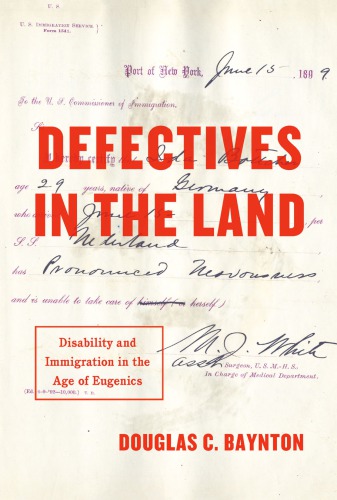Product desciption
Defectives In The Land Disability And Immigration In The Age Of Eugenics Douglas C Baynton by Douglas C. Baynton 9780226364162, 022636416X instant download after payment.
Defective. Handicapped. Ugly. Dependent. These words are Douglas Baynton s chapter titles, labels that were used to describe disabled immigrants during the period of American history when a series of laws were put in place to restrict immigration from less desirable nations (from Southern and Eastern Europe, 1882 to 1920s). Baynton s history details the ways in which a great variety of disabled immigrants were turned back during these years, among them the deaf, blind, epileptic, and mobility-impaired, also people with curved spines, hernias, flat or club feet, missing limbs, and short limbs, also those who had intellectual or psychiatric disability, even men diagnosed with poor physique or feminism (underdeveloped sex organs). The labels and defects are named in immigration policies and procedures; Baynton insists, quite reasonably, that immigration law offers the clearest revelation of the era s cultural assumptions about disability. One of his findings is that disability, even more than race (which is usually highlighted in immigration histories), was the main concern of immigration restrictionists. Over time, the idea that disabled people were dependent, and thus a burden, got amplified and became a social issue, not confined to family or local community. Meanwhile, the stigma of visible defects grew in intensity, along with the fear of traits that could not be seen (germ theory, defective germ plasm, infectious diseases). Polluted heredity flowing into the future was an ever-present fear. Until now, with Defectives in the Land, the issue of discrimination against people with disabilities in immigration law has gone unrecognized and unexamined."


